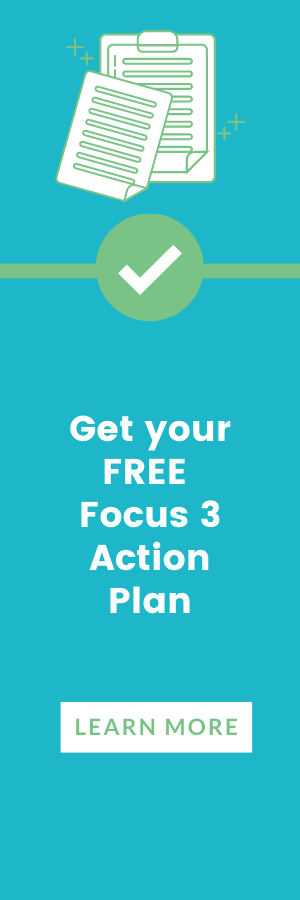The 7 Metrics Every Service and Project Based Business Needs to Track
Do you know the metrics that you should be tracking in your service-based business?

Do you know the metrics that you should be tracking in your service-based business? There are seven metrics that you should be tracking if you run a service-based business or even a project-based business.
Metric #1: Revenue Month by Month
It's super important that you have a budget or even a financial mapping planner spreadsheet that will track revenue month by month. This is important because not only will it allow you to see where your revenue is throughout the year, but it will also help you to track the highs and the lows.
Metric #2: Monthly Sales
You should map this out for each and every month in the year and then also look at how many sales you're making per quarter. Again look to see if there are any highs and lows.
Metric #3: Leads Month by Month
Every month you should be tracking how many leads you are getting. Because when you look at your leads and you compare them to sales, that's where you'll get your conversion rate.
Metric #4: Lead Conversion Rate
Speaking of conversion rate… the fourth metric that you should be tracking is your lead conversion rate. If you have 10 leads coming in a month and 4 of them turn into customers, you have a 40% conversion rate.
Do you know what your conversion rate is? Do you know how many of your potential customers you could have had based on the leads that came into your business?
If you are a service-based business that does discovery sessions or introductory calls, you might also want to look at how many no shows or cancellations you have for those discovery calls. Is it because people run at a time or do you have a mechanism set up to remind them of these appointments? If not, you might find a gap there of no shows that really would help increase your overall conversion rate.
Metric #5: Landing Page Conversion Rate
Chances are there is a page on your website, such as a landing page for one of your services, that you drive people to in order to become a lead, whether they fill out a form or they book in for a discovery session. You should know what your landing page conversion rate is.
Essentially to calculate that you would look at how many visitors you have to that landing page. I like to look at unique visitors so I know exactly how many people came. Then you look at how many people either completed the transaction that you want them to, such as filling out a form or booking in a discovery session.
When you divide the amount of leads that you received by the amount of unique visitors, that gives you your landing page conversion rate.
If this conversion rate is high, awesome; if not, then you may need to look at the landing page to say, "What can we tweak here? Should we tweak the copy? Should we look at the headline? And is there anything that we can adjust in order to make this perform better?"
Metric #6: Average Ad Cost Per Click (CPC)
If you run paid ads, the next metric to know is what your average ad cost per click is. I'm not talking about just general clicks on your ads. I'm talking about true link clicks from the ad to your website. Do you know what the average cost for that is?
Metric #7: Average Click Through Rate (CTR)
This metric is closely related to #6. Do you also your average ad click through rate? Of all the impressions are all the people that see your ad, how many people click through?
These two numbers (CPC and CTR) are really crucial to understanding how well your ads are performing. It will also tell you how many people you're sending to your landing page from your ads, how many are coming from organic, etc.
After you have these metrics, then you'll be able to understand of all the sales that you made, attribute that back, and then be able to look a little bit deeper into whether you can improve your ads and whether you are doing well.

IMPORTANT LINKS
LEARNING STYLES
All rights reserved. Success with Digital Inc. | Privacy Policy | Refund Policy




